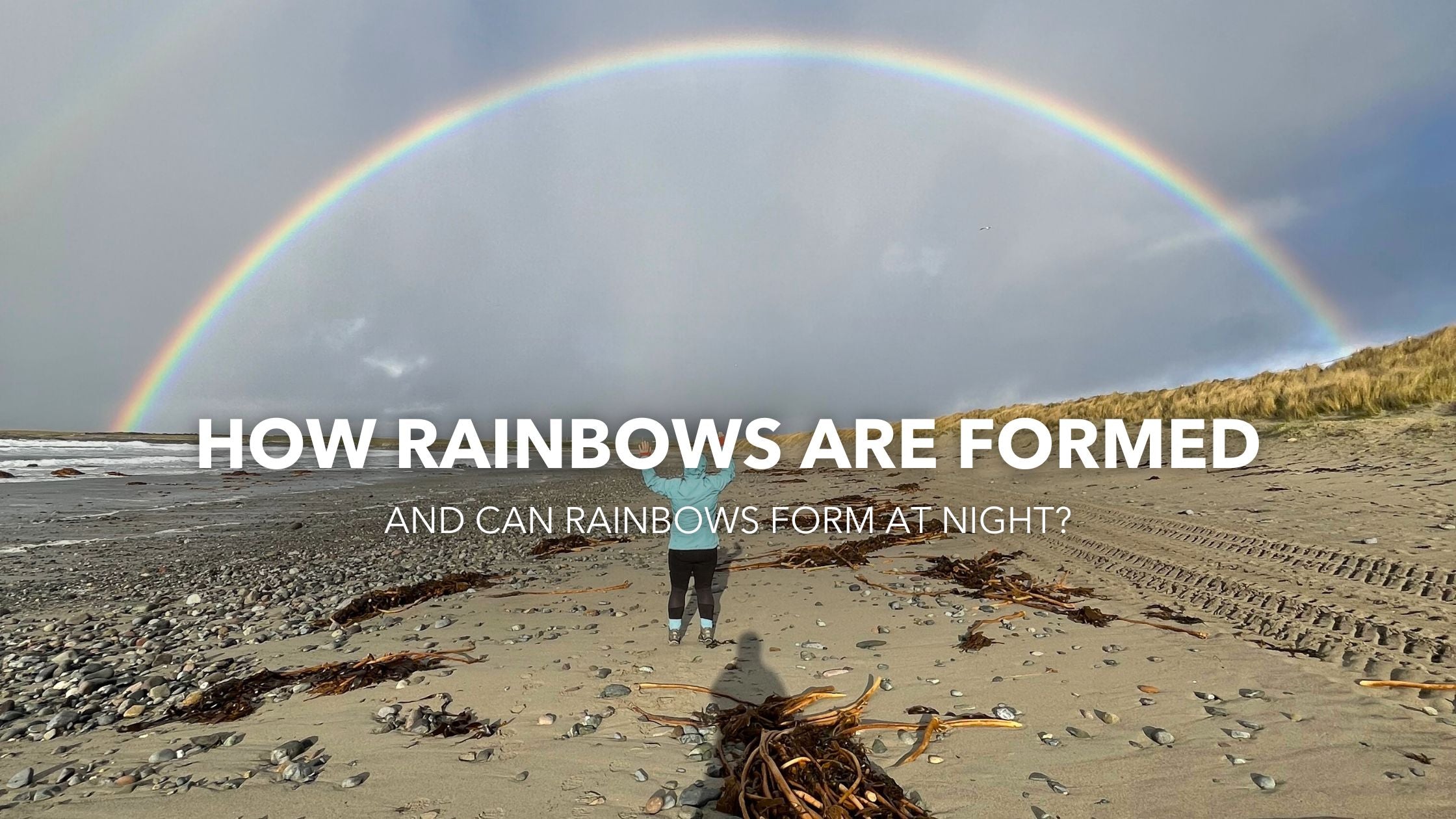The Magic of Rainbows in Ireland: How rainbows are formed.
Once upon a time, in the lush, green landscapes of Ireland, where myths intertwine with reality, and every drop of rain whispers ancient tales, there lived a phenomenon so enchanting that it captured the hearts of all who beheld it - the rainbow. These vibrant arcs of colour seem to dance across the Irish skies, a vivid reminder of nature's artistry. But what is the science behind this magical display? Let’s explore the fascinating world of rainbows in Ireland, where fact meets folklore.
How are rainbows formed?
Rainbows are not just a feature of Irish folklore; they are a splendid natural phenomenon. Essentially, they form when sunlight interacts with moisture in the atmosphere. This interaction involves both refraction, where light bends when it enters a water droplet, and reflection, where light bounces off the inside surface of the droplet. As light exits the droplet, it disperses into its component colours, creating the spectrum we see as a rainbow. The University of Illinois’ Atmospheric Sciences department explains this process as a "spectrum of light appearing in the sky... due to the refractive properties of water droplets" (University of Illinois, Atmospheric Sciences).
Can rainbows form at night?
Yes, though they are rare and are known as moonbows or lunar rainbows. They occur when moonlight, which is just reflected sunlight, interacts with moisture in the air. Moonbows are often fainter than their daytime counterparts due to the lower intensity of moonlight. The International Dark-Sky Association notes that for a moonbow to be visible, the sky must be very dark, and the moon must be very bright and low in the sky (International Dark-Sky Association).
Can rainbows appear without rain?
Interestingly, rainbows can appear even without rain being present in the immediate vicinity. This phenomenon happens when sunlight refracts through airborne moisture from distant rain showers or other sources of water particles, like mist, spray, or dew. The National Weather Service confirms that rainbows can indeed form in conditions of mist or light drizzle, which may not be perceivable as 'rain' (National Weather Service).
Why is Ireland Associated with Rainbows?
Ireland’s climate is ideal for rainbow formation. According to Met Éireann, the Irish National Meteorological Service, Ireland experiences frequent showers and a fair amount of sunshine, especially during spring and autumn. This combination of sun and rain provides perfect conditions for rainbows. In fact, statistics from Met Éireann show that parts of Ireland can have up to 225 wet days annually, increasing the likelihood of witnessing this magical phenomenon. And the association of rainbows with Ireland primarily stems from our climate. The legend of the pot of gold at the end of the rainbow is closely tied to Irish folklore about leprechauns.
Rainbows, whether seen against the backdrop of the rolling Irish hills or elsewhere in the world, are a reminder of the incredible interplay between light and nature. They remind us that even after a storm, there's beauty to be found as light transforms drops of rain into arcs of colour. So, the next time you find yourself in Ireland or anywhere else where rain meets sunshine, look up – you might just be lucky enough to spot nature's most beautiful palette in the sky.



